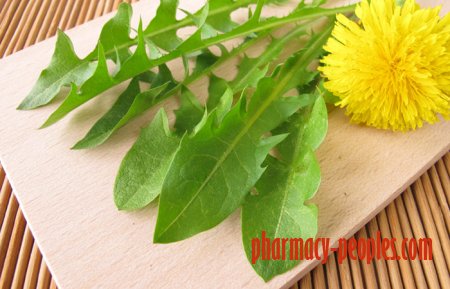What Are the Benefits of Organic Dandelion Leaf?
Dandelion (Taraxacum officinale) is the unassuming powerhouse of herbal medicine. Often mischaracterized as a weed, dandelion (the leaf in particular) is packed with beneficial nutrients that allow it to make substantial, positive contributions toward supporting good health. In traditional Chinese medicine, dandelion is used to encourage liver health, nourish bones and joints, and support the body’s normal detoxification routes. The plant is easy to grow, easy to use, and its many positive attributes might surprise you.
Nutrients in Dandelion Leaf
Whether you add them to a leafy green salad or a green smoothie, dandelion leaves contain a huge array of beneficial nutrients. In fact, every part of the plant—the roots, leaves, crown, and flowers—is edible. Dandelion leaves offer beta-carotene, thiamin, riboflavin, calcium, iron, zinc, and magnesium. They have more potassium than bananas, more vitamin A than carrots, and more protein than spinach. Dandelion leaf is also a source of antioxidants that support cardiovascular health, phytonutrients like alkaloids, steroids, and triterpenoids,[3] as well as kynurenic acid, which supports digestive health.
Here is the nutritional breakdown for ½ cup of dandelion leaves.
Nutrient 1/2 Cup Daily Value
Fiber 1 g 4%
Protein 0.74 g 3%
Calcium 51 mg 5.1%
Iron 0.85 mg 5%
Magnesium 10 mg 2.5%
Phosphorus 18 mg 1.8%
Potassium 109 mg 3.11%
Sodium 21 mg 0.87%
Zinc 0.11 mg 0.73%
Beta-Carotene 1.61 mg N/A
Riboflavin 0.072 mg 5.5%
Thiamin 0.052 mg 4.3%
Vitamin A 2794 IU 56%
Vitamin B6 0.069 mg 3.45%
Vitamin C 9.6 mg 16%
Vitamin K 214.1 mg 267%
Dandelion Leaf Supports a Healthy Liver
Dandelion leaf contains nutrients that directly and indirectly support normal liver function. In animal studies, dandelion leaf has been found to suppress fat accumulation in the liver. It contains antioxidants that promote normal lipid profiles and blood sugar. Antioxidants, like those found within dandelion leaf, may be one of the best natural therapies for protecting the liver against oxidative stress.
Other Health Benefits of Dandelion Leaf
According to traditional medicine principles, dandelion leaves promote optimal fluid balance and stimulates urinary system function and flow. It has also been commonly used to calm an upset stomach and stimulate appetite. Animal studies show that dandelion may help reduce inflammation, and support normal blood sugar levels.
How to Grow Dandelions
To take full advantage of all the benefits dandelion has to offer, the best approach is to grow your own. Dandelions grow easily throughout the northern hemisphere. In fact, many homeowners are desperate to stop dandelions from growing in their lawn. While you can easily find dandelions growing naturally at a nearby park, they may have been exposed to chemicals or pesticides and consuming them is ill-advised.
Dandelion seeds are cheap, and you can buy a couple hundred for under five dollars. Most local gardening stores should have non-GMO seeds available. Plant the dandelion seeds in early spring in well-drained, fertile soil. Find a place that has full or partial sun. Plant seeds directly into the soil 1/4 inch deep and in single rows. The plant requires minimal care and is ideal for beginners—all you need to do is water sparingly and watch them grow.
Dandelions bloom around mid-spring, approximately 85 to 95 days after planting. You can harvest the green dandelion leaf throughout the growing season. Leaves can be eaten raw or blanched. Blanche dandelion leaves for a couple of minutes in salted, boiling water to remove some of the bitterness. As the summer progresses, the leaves will become more bitter.
Harvest the roots in the fall of the second year of growth. You can also dry the roots in an oven or with help from the sun. Store the dried parts of the plant in an airtight container.
Dandelion Tea
Dandelion tea can be made from the root, flower, and leaf, each with a slightly different flavor profile and brewing instructions. Dandelion root tea, for example, is an inexpensive coffee substitute and weight loss aid.
To make dandelion leaf tea, simply take a small handful of dried dandelion leaves, (discard any large stem pieces), crush into small pieces, and place 1-2 teaspoons into an organic tea bag, reusable tea ball, tea infuser, or French press.
Heat, but do not boil, one cup of water—boiling water will only accentuate the bitterness of the leaves. A temperature around 175℉ will produce optimal flavor. Pour your hot water into a teacup or mug and add your tea bag. Steep for 5 minutes and remove the leaves.
Serve dandelion tea hot or cold. To add a visual flair, garnish with fresh dandelion flowers. Dandelion tea readily accommodates added flavors or a natural sweetener, like honey. Some people add stevia leaves or raspberry leaves during the steeping process. These flavors counteract the bitter notes of the dandelion leaf without overpowering the natural flavors.
Supplementing With Dandelion
There are many types of dandelion supplements to choose from; liquid extracts, pills, and tea are among the most common. Dandelion leaf is also an ingredient in many dietary supplement formulas, especially those that support liver health. It’s best only to purchase supplements that contain organic dandelion leaf that has not been exposed to pesticides or other chemicals.

